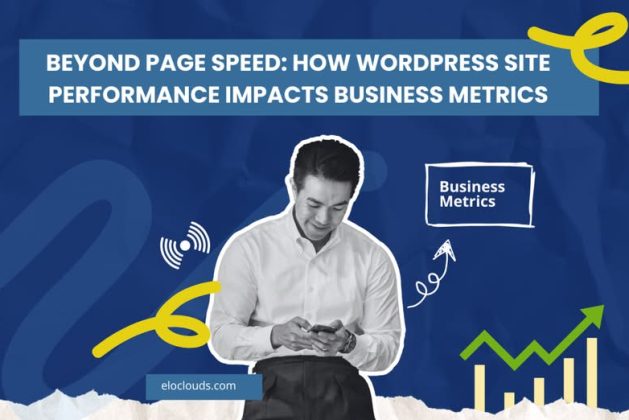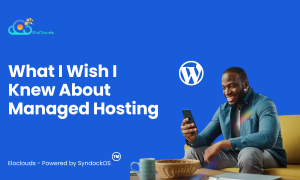Website performance is often discussed in technical terms—load times, server response, and optimization techniques.
However, for businesses running WordPress sites, performance impacts much more than technical metrics; it directly affects core business outcomes.
Let’s explore how WordPress performance influences your bottom line.
The Real Cost of Slow WordPress Sites
While developers focus on milliseconds and optimization, business leaders should view performance through the lens of:
- Customer acquisition costs
- Conversion rates
- Customer lifetime value
- Brand perception
- Operational efficiency
According to Portent research, sites that load in 1 second have conversion rates 3x higher than those that load in 5 seconds.
This translates directly to revenue.
Performance Impact on Key Business Metrics
Acquisition Costs
Google’s integration of Core Web Vitals into ranking algorithms means performance directly affects organic visibility.
Poor-performing sites require higher paid media spend to maintain visibility.
- SEMrush reports that improving Core Web Vitals can boost organic traffic by up to 30%, reducing acquisition costs proportionally.
Bounce Rates and Engagement
Performance problems severely impact user patience and engagement:
- 53% of mobile users abandon sites that take more than 3 seconds to load
- Each additional second reduces customer satisfaction by approximately 16%
- A 2-second delay drops session duration by an average of 22%
As Google’s research shows, early performance issues cause a cascading negative effect across the entire customer journey.
Conversion Rates
Beyond bounce rates, users behave differently on slower sites:
- Add-to-cart rates decrease by 20% per additional second of load time
- Form completion rates drop by 14% for each second of delay
- User-generated content submissions fall by 28% on slow-loading sites
Cloudflare’s retail analysis found that improving site speed from 8s to 2s increased conversions by over 74%.
Customer Retention
Performance problems don’t just impact new users—they erode loyalty:
- 79% of dissatisfied customers are less likely to purchase again
- Customer satisfaction scores drop by 16% per additional second of load time
- Support ticket volume increases by 12% for every extra 500ms delay
Adobe’s Experience Index highlights that digital experience quality heavily influences repeat purchase behavior.
The Mobile Performance Imperative
With mobile accounting for 60–70% of web traffic, mobile performance is critical:
- Mobile users are 32% more sensitive to performance issues than desktop users
- Poor mobile Core Web Vitals cause 39% lower conversion rates
- 50% of mobile users cite slow loading as the top reason for abandoning purchases
Despite technical challenges, expectations for mobile performance are even higher.
WordPress-Specific Performance Challenges
Plugin Proliferation
The average WordPress site uses 22–30 plugins, adding code, queries, and potential conflicts.
- Each non-essential plugin adds 35ms to load time and costs ~$150 annually in maintenance and conflict resolution.
Inefficient Database Operations
Aging WordPress databases accumulate inefficiencies (post revisions, transients, metadata).
- Cleaning up these inefficiencies can boost query performance by 30–60%, improving checkout and admin speeds.
Image Optimization Failures
Despite available tools, 72% of WordPress sites serve oversized images, increasing bandwidth costs and harming performance.
The Business Case for Investing in Performance
Direct Revenue Impact
For an e-commerce site making $10,000 daily:
- A 1-second improvement typically increases conversions by 7%.
- That’s $700 extra daily or $255,500 annually.
- Performance investments often achieve 300%+ ROI in the first year.
Infrastructure Cost Savings
Performance-optimized WordPress sites:
- Require 40–60% fewer server resources
- Consume less bandwidth
- Reduce CDN and database costs
Typical annual savings: $3,000–$7,000 for mid-sized WordPress sites.
Operational Efficiency
High-performance sites enjoy:
- 53% less time troubleshooting performance issues
- 37% fewer customer support tickets
- 28% improved content team productivity
Automattic research shows these gains save 15–20 hours per week for mid-sized teams.
Beyond Technology: Performance as Business Strategy
Leading organizations integrate performance into:
Marketing KPIs
- Core Web Vitals as marketing objectives
- Performance budgets for new feature development
- Load time thresholds for third-party scripts
- Mobile performance parity requirements
Customer Experience Strategy
- Performance segmentation in analytics
- Progressive enhancement for diverse networks
- Performance-first design principles
Competitive Differentiation
Deloitte found that brands highlighting performance in their value propositions see 18% higher retention among tech-savvy users.
Implementation Strategies
Organizations can pursue various paths to improvement:
Incremental Optimization
- Progressive enhancement of existing installation
- Plugin audit and consolidation
- Image delivery optimization
- Hosting upgrades
Expected gain: 30–50% improvement.
Infrastructure Overhaul
- Migration to container-based WordPress
- Global CDN with edge computing
- Database optimization and restructuring
- Server-level caching
Expected gain: 70–90% improvement.
Intelligent Hosting Evolution
- Migration to AI-driven WordPress hosting
- Autonomous optimization systems
- Predictive resource allocation
- Auto-healing technology
Expected gain: 80–95% performance boost while reducing maintenance by up to 80%.
Conclusion
WordPress site performance is a fundamental business driver, not just a technical concern.
Businesses that treat performance strategically outperform competitors across all key metrics.
As digital experience expectations rise, the gap between average and exceptional WordPress sites will increasingly mirror a gap in business performance.
This article was created by the team at EloClouds — pioneers in intelligent WordPress hosting solutions that deliver exceptional performance without the maintenance burden. Learn more at eloclouds.com.


